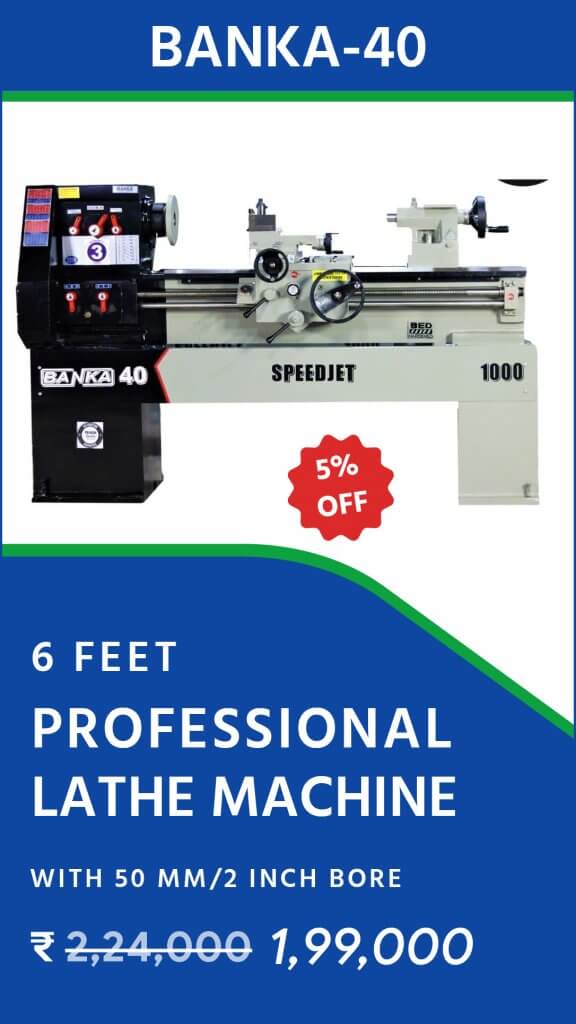How To Mounting A New Chuck
Make sure that the threads of the (cast-iron) backplate and spindle are thoroughly cleaned and very lightly oiled. Screw the backplate on firmly, using hand pressure only.
- Before machining starts find a suitable bar, mount it between centres and allow the tailstock to apply a little pressure towards the headstock. Doing this will eliminate any spindle end-play (if it exists) – a vital requirement when making very accurate facing cuts.
- Use a pair of inside calipers to measure the diameter of the recess in the back of the chuck; transfer this measurement to a pair of outside calipers and machine a spigot that is oversize by about 1/64″ (0.5 mm); if you doubt your skill to do this, simply leave the spigot a little larger.
- The face of the backplate that the chuck pulls up against must be dead flat; once the oversize spigot has been formed spend several minutes raising just “dust” across this surface to make sure that it is as flat and as smooth as possible.
- At the junction of the “flange face” and the “vertical wall” of the spigot (Fig. 2), a smallundercut should be made. This will allow the finishing cuts on the wall to be taken right down so that there is no interference between the “corners” on the backplate and those on the chuck.
- Before the last cuts are taken, the turning tool should be changed for one shaped so that it will cut down the wall of the spigot – the tool being moved backwards and forwards along the lathe bed, not across.
- It’s very easy to get the size of the spigot approximately right, but the final cuts, when its diameter is approaching the size that will allow it to be pressed firmly into the back of the chuck, must be taken very carefully indeed – only “dust” should be raised from the surface by the cutting tool.
- Leave the chuck on a hot radiator for an hour to expand it slightly before starting the machining operation; if you decide to do this, remember to pick it up whilst wearing an insulated glove – and don’t overdo the heating, otherwise you will have a difficult-to-remove “shrink” fit rather than one that can be assembled with a firm push or a very light tap with a hide-faced mallet.
- When the backplate is the correct size, mark out and drill the bolt holes. This is easily done if engineers’ blue, or a smear of red-oxide paint (or even chalk) is put on the backplate before fitting it to the chuck; when the plate is removed the location of the bolt holes will be apparent. Carefully mark out and drill the holes so that, as the bolts pass through the backplate, there is no possibility of them touching the sides and straining the backplate out of line; make them at least 1/16″ (1.5 mm) oversize on diameter.
- As final check make sure that the mounting bolts do not bottom out in their tapped holes and that chuck and backplate are drawn solidly together.
- If the backplate is a larger than the chuck, finish turn it to the chuck-body diameter and, for safety, radius the rear edge; when this is done, scribe a fine line across the chuck body and backplate so that, when the chuck is removed for dismantling and cleaning, it can be replaced in the same position.
- your 3-jaw chuck has two or more key holes, one of them may have a circle, or other mark, stamped alongside it to show that it should used for final tightening. As a chuck wears it is not unknown for one of the other key holes to provide a more accurate grip.
- you check the accuracy of your new chuck, make sure that you use a piece of precision ground bar and mount the magnetic base (or other device) holding the dial-test indicator onto the lathe bed, not the saddle or compound slide rest. Chuck makers cover their backs by quoting pessimistic figures for alignment – typically 0.005″ two inches away from the jaws; in practice, a good chuck can be within 0.001″ at this distance, or even better – but you will not find anyone willing to guarantee it.
- When using the chuck remember its intended purpose – a precision work-holding device: it is not a Record No. 32 all-steel bench vice. The most common fault found on 3-jaw chucks (apart from wear) is one or more broken jaw threads caused by over-tightening when opened out to maximum capacity.
- If you can afford it, have two 3-jaw chucks in operation; one for “rough” work, to take the stress and strains of heavy use, the other employed only for the finest finishing of materials already part-machined. By doing this you will always have one chuck that remains an accurate, easily-used and reliable work holder.






